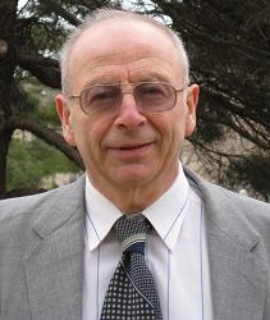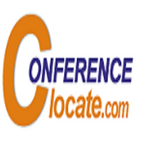Theme: The Future Of Nanoelectronics In Addressing Global Needs Is Evident For Renewable Energy.
Advanced Nano – 2022
Conference Series LLC Ltd. is delighted to welcome you to its “39th International conference on Advanced Nanotechnology and Nano electronics(ADVANCED NANO – 2022)which is going to be held during August 29-30,2022 Rome, Italy focuses on the theme “The Future Of Nano electronics In Addressing Global Needs Is Evident For Renewable Energy.”
This ADVANCED NANO – 2022 is the international platform which brings together the collection of investigators who are at the forefront in the field of Nanotechnology. The scientific program will include oral presentations of sub-disciplines, keynote sessions led by eminent scientists and poster sessions presented interactively by junior scientists and graduate students. This Nanotechnology congress is the ultimate meeting place for all the experts worldwide for new interdisciplinary scientific collaborations and networking.
With its scientific sessions, you are provided assurance to explore the latest technologies and breakthroughs that are specific to your area of work. No doubt the event has a broad scope of topics and continued in parallel sessions relative to the specific area of research.
We look forward to welcoming you to this in-person nanotechnology conference, and to the many exciting presentations and discussions through which we plan to share and advance knowledge of Nanotechnology at Rome,Italy
Target Audience:
- Scientists
- Professors
- Research Scholars and students
- Nanotechnology Companies
- Nanotechnology Associations
- Materials Science and Nanotechnology Engineers
- Materials Scientists/Research Professors
- Physicists/Chemists
- Junior/Senior research fellows of Materials Science/ Nanotechnology/ Polymer Science/
- Materials Science Students
- Directors of chemical companies
- Materials Engineers
- Members of different Materials science associations
- Polymer companies.
Track 1: Nanotechnology
Nanotechnology refers to the branch of science and engineering devoted to designing, producing, and using structures, devices, and systems by manipulating atoms and molecules at nanoscale. Nanotechnology is helping to considerably improve, even revolutionize, many technology and industry sectors: information technology, homeland security, medicine, transportation, energy, food safety, and environmental science, among many others.
Track 2: Molecular nanotechnology
Molecular nanotechnology (MNT) is a technology based on the ability to build structures to complex, atomic specifications by means of mechanosynthesis .This is distinct from nanoscale materials. MNT would involve combining physical principles demonstrated by biophysics, chemistry, other nanotechnologies, and the molecular machinery of life with the systems engineering principles found in modern macroscale factories. MNT would involve combining physical principles demonstrated by biophysics, chemistry, other nanotechnologies
Track 3: Nanofabrication
Nanofabrication can be used to construct ultra-dense parallel arrays of nanowires, as an alternative to synthesizing nanowires individually Of particular prominence in this field, Silicon nanowires are being increasingly studied towards diverse applications in Nano electronics, energy conversion and storage. Such SiNWs can be fabricated by thermal oxidation in large quantities to yield nanowires with controllable thickness. Nanofabrication is of interest to computer engineers because it opens the door to super-high-density microprocessor s and memory chip s. It has been suggested that each data bit could be stored in a single atom.
Track 4: Nanomaterials
Nanomaterials research takes a materials science-based approach to nanotechnology, leveraging advances in materials metrology and synthesis which have been developed in support of microfabrication research. Materials with structure at the nanoscale often have unique optical, electronic, thermo-physical or mechanical properties. Microporous materials exhibit pore sizes with comparable length-scale to small molecules. For this reason such materials may serve valuable applications including separation membranes.
Track5: Nano metrology
Nano metrology is a subfield of metrology, concerned with the science of measurement at the nanoscale level. Nano metrology has a crucial role in order to produce nanomaterials and devices with a high degree of accuracy and reliability in Nano manufacturing. The needs for measurement and characterization of new sample structures and characteristics far exceed the capabilities of current measurement science. A challenge in this field is to develop or create new measurement techniques and standards to meet the needs of next-generation advanced manufacturing, which will rely on nanometer scale materials and technologies
Related conferences:
PSYCHOLOGY-2022|WASTEMANAGEMENT-2022|PARKINSONS-2022|CHILDBIRTH-2022|NURSING PRACTITIONERS-2022 |ENDOCRINE-2022|GASTROENTEROLOGY SUMMIT-2022|PLANT SCIENCES-2022|PERSONAL MEDICINE-2022|NANOMEDICINE-2022|PLANT BIOTECH-2022
Track 6: Molecular Engineering
Molecular engineering is an emerging field of study concerned with the design and testing of molecular properties, behavior and interactions in order to assemble better materials, systems, and processes for specific functions. Molecular engineering is highly interdisciplinary by nature, encompassing aspects of chemical engineering, materials science, bioengineering, electrical engineering, physics, mechanical engineering, and chemistry. There is also considerable overlap with nanotechnology, in that both are concerned with the behavior of materials on the scale of nanometers or smaller.
Track 7: Nanomechanics
Nano mechanics is that branch of nanoscience which deals with the study and application of fundamental mechanical properties of physical systems at the nanoscale, such as elastic, thermal and kinetic material properties. nanomechanics is based on some empirical principles (basic observations), namely general mechanics principles and specific principles arising from the smallness of physical sizes of the object of study. Nano mechanics is that branch of nanoscience which deals with the study and application of fundamental mechanical properties of physical systems at the nanoscale, such as elastic, thermal and kinetic material properties
Track 8: Nano tribology
Nano tribology is the branch of tribology that studies friction, wear, adhesion and lubrication phenomena at the nanoscale, where atomic interactions and quantum effects are not negligible. The aim of this discipline is characterizing and modifying surfaces for both scientific and technological purposes. Changing the topology of surfaces at the nanoscale, friction can be either reduced or enhanced more intensively than macroscopic lubrication and adhesion; in this way, super lubrication and super adhesion can be achieved
Track 9: Nano sensors
Nano sensors are nanoscale devices that measure physical quantities and convert these to signals that can be detected and analyzed. There are several ways proposed today to make Nano sensors these include top-down lithography, bottom-up assembly, and molecular self-assembly. There are different types of Nano sensors in the market and in development for various applications, most notably in defense, environmental, and healthcare industries. These sensors share the same basic workflow: a selective binding of an analyte, signal generation from the interaction of the Nano sensor with the bio-element, and processing of the signal into useful metrics.
Track 10: NANOPOLYMERS
Polymer nanocomposites (PNC) are a polymer or copolymer having dispersed in its nanoparticles. These may be of different shape (e.g., platelets, fibers, spheroids), but at least one dimension must be in the range of 1 to 50 nm. These PNC's belong to the category of multi-phase systems (MPS, viz. blends, composites, and foams) that consume nearly 95% of plastics production. These systems require controlled mixing/compounding, stabilization of the achieved dispersion, orientation of the dispersed phase, and the compounding strategies for all MPS, including PNC, are similar.
Related conferences:
PSYCHOLOGY-2022|WASTEMANAGEMENT-2022|PARKINSONS-2022|CHILDBIRTH-2022|NURSING PRACTITIONERS-2022 |ENDOCRINE-2022|GASTROENTEROLOGY SUMMIT-2022|PLANT SCIENCES-2022|PERSONAL MEDICINE-2022|NANOMEDICINE-2022|PLANT BIOTECH-2022
Track 11: Carbon Nanotube Spintronics
Carbon nanotubes bridge the molecular and crystalline quantum worlds, and their extraordinary electronic, mechanical and optical properties have attracted enormous attention from a broad scientific community. Spintronic devices are used in the field of mass-storage devices. It is used to compress massive amounts of data into a small area, as an instance, approximately one trillion bits per square inch. Carbon nanotubes bridge the molecular and crystalline quantum worlds, and their extraordinary electronic, mechanical and optical properties have attracted enormous attention from a broad scientific community
Track 12: Nanomedicine
Nanomedicine is the medical application of nanotechnology. Nanomedicine ranges from the medical applications of nanomaterials and biological devices, to Nano electronic biosensors, and even possible future applications of molecular nanotechnology such as biological machines. Current problems for nanomedicine involve understanding the issues related to toxicity and environmental impact of nanoscale materials. The size of nanomaterials is similar to that of most biological molecules and structures; therefore, nanomaterials can be useful for both in vivo and in vitro biomedical research and application.
Track 13: Helium Ion Microscopy and Spectroscopy
The helium ion microscope can collect energy spectra of backscattered helium ions and identify elements in the sample with submicron resolution. We will show examples of biological, bio-geo materials and energy materials showing differences in imaging with HIM vs. SEM along with some EDS and RBS data. As the helium ion beam interacts with the sample, it does not suffer from a large excitation volume, and hence provides sharp images with a large depth of field on a wide range of materials
Track 14: Nano sphere Lithography
Nano sphere lithography (NSL) is an economical technique for generating single-layer hexagonally closes packed or similar patterns of nanoscale features. Generally, NSL applies planar ordered arrays of nanometer-sized latex or silica spheres as lithography masks to fabricate nanoparticle arrays. These spheres can be deposited using multiple methods including Langmuir-Blodgett, Dip Coating, Spin Coating, solvent evaporation, force-assembly, and air-water interface
Track 15: Nanowire arrays
Each nanowire is individually seeded from a catalyzing gold particle and then grown via vapor−liquid−solid growth in a metal−organic vapor phase epitaxy system. The diameter and position of each nanowire can be controlled to create engineered arrays, demonstrated with a hexagonal photonic crystal pattern. More generally, nanowires can be defined as structures that have a thickness or diameter constrained to tens of nanometers or less and an unconstrained length
Related conferences:
PSYCHOLOGY-2022|WASTEMANAGEMENT-2022|PARKINSONS-2022|CHILDBIRTH-2022|NURSING PRACTITIONERS-2022 |ENDOCRINE-2022|GASTROENTEROLOGY SUMMIT-2022|PLANT SCIENCES-2022|PERSONAL MEDICINE-2022|NANOMEDICINE-2022|PLANT BIOTECH-2022|PLANT BIOTECH-2022.
Market analysis:
The global nanotechnology market size was valued at $1.76 billion in 2022, and is projected to reach $33.63 billion by 2028, registering a CAGR of 36.4% from 2022 to 2028. Nanoscience and nanotechnology involve the study of nanoparticles and devices, which find their application across all the science fields such as chemical, bio-medical, mechanics, and material science among others. Nanotechnology market encompasses the production and application of physical, chemical, and biological systems and devices at scales ranging from individual atoms or molecules to around 100 nanometers.
Nanotechnology carries a significant impact, and serves as a revolutionary and beneficial technology across various industrial domains, including communication, medicine, transportation, agriculture, energy, materials & manufacturing, consumer products, and households. Emerging use cases and application is expected to be one of the key factors contributing towards the growth of nanotechnology market size. The U.S. National Nanotechnology Initiative has estimated that around 20,000 researchers are working in the field of nanotechnology. For the UK, the Institute of Occupational Medicine has estimated that approximately 2,000 people are employed in new nanotechnology companies and universities where they may be potentially exposed to nanoparticles.

Top Impacting Factors:
Significant factors that impact growth of the global nanotechnology industry include growth in adoption of nanotechnology in medical diagnosis, and emerging technological advancements in nanotech devices. However, problems regarding deployment of nanotech devices in extreme weather conditions and high cost of the technology act as major restraining factors, hampering the market to a certain extent. Furthermore, increase in government support and funding, and emergence of self-powered nanotech devices are expected to offer lucrative opportunities in the coming years.
Abstract Submission Criteria and Eligibility
PRESENTATION REQUIREMENTS:
Participating authors are answerable for registration, travel, and hotel costs. Note: Those with submitted abstracts will get an acknowledgment mail enabling them to enroll for the gathering.
Abstracts will be compiled, and conference books are made available to participants at the conference.
Any presenter who is unable to attend should arrange for another qualified individual to present the paper/poster in question. If such a change is necessary, please notify our conference team
SUBMISSION OPTIONS:
Oral paper introductions will have 30-minute schedule time slot. The keynote session will have for 45-minute presentation duration, workshop/special session will have 1-hour long schedule opening and symposium will have 1-hour long availability followed by 5-minute Q&A session.
Graduate and master’s understudies are qualified to present their abstracts under poster and e-poster presentation category.
Ph.D. understudies are qualified to submit their abstract under special YRF (Young Researcher's Forum), poster and e-poster presentation category.
NOTE: YRF category includes short oral presentation especially for Ph. D. students
Extended abstract: Submissions should utilize the Abstract Template. Papers submitted in this category may represent original empirical research, theoretical development, reviews, or critiques.
Participation Options and Benefits
PARTICIPATION OPTIONS: Physiotherapy Conference provides the participants with different modes or ways to participate such as Delegate or Speaker under either ACADEMIC / STUDENT / BUSINESS Category. Mode of participation is Online through Power Point Presentation/ Video Presentation on Cisco Webinars.
1. Keynote speaker: 45-50 minutes
2. Speaker (oral presentation): 25-30 minutes (only one person can present)
3. Speaker (workshop): 45-50 minutes (more than 1 can present)
4. Speaker (special session): 45-50 minutes (more than 1 can present)
5. Speaker (symposium): more than 45 minutes (more than 1 can present)
6. Delegate(only registration): will have access to all the sessions with all the benefits of registration
7. Poster presenter: can present a poster and enjoy the benefits of delegate
8. Remote attendance: can participate via video presentation or e-poster presentation
9. Exhibitor: can exhibit his/her company’s products by booking exhibitor booths of different sizes
10. Media partner
11. Sponsor
12. Collaborator
Benefits of Joining Conference :
- Get your abstract published with DOI
- Get Certified for your participation
- Reduced Costs Affordability
- Knock Down Geographical Barriers
- Convenience from comfort of your own home or from work
- They’re Archived: Ability to view events in the recording
- Great resource for learning new career skills
- Learn from the Pros
- Global exposure to your research
- Make new connections
- Significant time saving
- Increased engagement
- Wider Reach
- More Engaging
- Position yourself as the expert
- Get your abstracts published with unique DOI in International Journals
- Get up to 50% discounts for publishing your entire article in our open access International Journals
- Get Handbooks and conference kits
- Get an access to the network with eminent personalities from worldwide.
Conference Highlights
- Track 1: Nanotechnology
- Track 2: Molecular nanotechnology
- Track 3: Nanofabrication
- Track 4: Nanomaterials
- Track5: Nano metrology
- Track 6: Molecular Engineering
- Track 7: Nanomechanics
- Track 8: Nano tribology
- Track 9: Nano sensors
- Track 10: NANOPOLYMERS
- Track 11: Carbon Nanotube Spintronics
- Track 12: Nanomedicine
- Track 13: Helium Ion Microscopy and Spectroscopy
- Track 14: Nano sphere Lithography
- Track 15: Nanowire arrays
To share your views and research, please click here to register for the Conference.
To Collaborate Scientific Professionals around the World
| Conference Date | August 29-30, 2022 | ||
| Sponsors & Exhibitors |
|
||
| Speaker Opportunity Closed | |||
| Poster Opportunity Closed | Click Here to View | ||
Useful Links
Special Issues
All accepted abstracts will be published in respective Our International Journals.
Abstracts will be provided with Digital Object Identifier by













